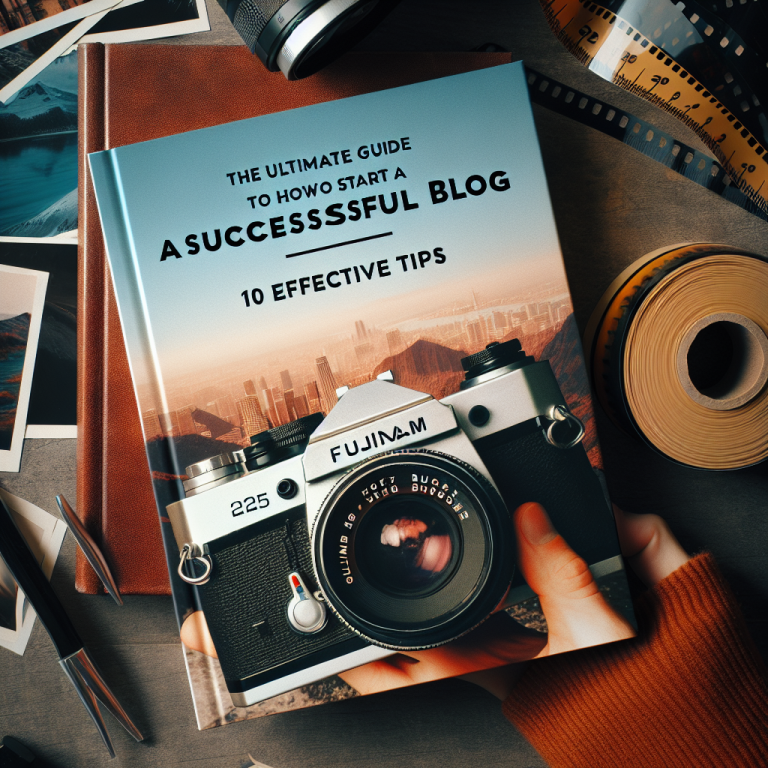The Secret to Writing Scripts That Make Your Business Videos Unforgettable
1. Understand Your Audience
Connecting with Their Needs
First things first, when I sit down to write a script, the very first thing I want to nail is the audience’s needs. I’ve learned it’s all about figuring out who you’re talking to. Are they young professionals? Busy moms? Small business owners? You need to know them like a best friend. This connection shapes how I deliver my message.
Understanding your audience goes beyond demographics. You’ve got to dive deep into their pain points and desires. What keeps them awake at night? What’s something that can make their lives easier? This insight helps me craft messages that resonate, making my videos not just memorable but also relevant!
Every line I write is informed by the knowledge of my audience. I always put myself in their shoes – what’s interesting, funny, or concerning to them? This practice has transformed the impact of my videos. By learning to speak their language, I’ve made it easier to grab their attention right from the get-go.
Building a Persona
A simple but effective trick is to create a persona for your target audience. I often sit down and sketch out a detailed profile: what they do for fun, their everyday challenges, and why they’d watch my video. This persona serves as my guiding light when I draft the script. Creating content without a clear persona feels like trying to hit a target blindfolded!
This persona should evolve over time, too, as you gather more insights. Regularly revisiting it ensures that I’m always aligned with their needs and interests. What’s great is that this process not only sharpens my focus but also inspires fresh ideas that captivate my viewers.
Ultimately, when I act like my persona is sitting right in front of me, my delivery becomes way more engaging. The closer I get to understanding them, the deeper I can connect through my words.
Engagement Through Storytelling
You know those moments in videos that make you go “Wow!”? A lot of that magic comes from storytelling. I always try to wrap my core messages in a compelling narrative, something that not only informs but also entertains. Everyone loves a good story, right? It’s how we remember information!
Every script I write blends facts with narratives that speak to my audience’s emotions. Whether it’s a success story, an analogy, or even a little humor sprinkled in, I find it easier to relate. This makes my content stick, leading to higher retention rates and shares. The emotional connection is an incredible tool I wield in my videos!
By weaving personal anecdotes into my scripts, I create authenticity. It helps me build trust with my audience. And trust is a powerful currency when you’re trying to keep someone watching—and engaged with your brand.
2. Crafting an Attention-Grabbing Opening
The Hook Effect
If there’s one thing I swear by, it’s the hook. The opening moment of your video is make-or-break. In my experience, I’ve found that a killer opening—be it a surprising fact, a question, or a bold statement—grabs attention faster than anything else.
I often think of my opening as a mini-thriller—something that sparks curiosity and almost demands the viewer watch on. For me, it’s crucial to set that tone right out of the gate. Many times, I’ll test a few different openings to see which one truly resonates best with my audience.
Creating that intrigue does wonders. I see a significant difference in viewer retention when I prioritize this part of my script. Don’t underestimate the power of those crucial first few seconds—they’re everything!
Setting the Stage
After hooking them, I always follow up with some context. This part of my script is about laying down the groundwork for what’s to come. I make sure the viewer knows why they should stick around: what’s in it for them?
I like to sprinkle in a bit of anticipation too—teasing what’s going to happen next keeps them on their toes and excited. By structuring my content in this way, I transform my videos from simple presentations to captivating journeys. The more engaged I make my audience feel, the more they trust me to lead them!
As I work on my scripts, I envision the audience in a state of curiosity. They’re nodding along, eager for the unfolding narrative. That’s the magic I aim for when setting the stage!
Using Strong Visuals and Sound
A video script isn’t just words on paper; it’s a blueprint for an experience. I’m a huge believer in integrating strong visual and audio elements into my scripts. Within my drafts, I make notes about visuals, graphics, or sound effects that will enhance the narrative. It’s all about creating a multi-sensory experience!
I’ve found that visuals especially help my points hit home. When the audience sees what I’m talking about, it settles in more effectively. I try to paint a vivid picture in my words, which aligns with visuals to create coherence.
Don’t sleep on sound effects or music, either! Carefully chosen audio can elevate the whole vibe of a video, making it feel more polished and professional. It’s all part of the strategy to keep viewers hooked and eager to stick around for more.
3. Delivering Clear and Concise Information
Clarity Over Complexity
Let’s be honest—nobody likes to wade through complicated jargon. As I write scripts, I focus on keeping things clear and straightforward. Knowing your stuff is great, but how you communicate it makes all the difference. I aim for my message to be understood in as few words as possible. It’s like squeezing out all the fluff and getting straight to the point!
A rule of thumb I stick to is the “kiss” principle—keep it simple, stupid. For my audience, the clearer I am, the better they absorb the information I’m providing. I delete anything that doesn’t contribute directly to my core message. This clarity not only helps hold their attention but also drives home my points more effectively.
In practice, I often have a friend or colleague watch my videos before they go live. Their feedback about clarity has been invaluable. If they have questions about what I meant, it’s a red flag for me! I take that as a cue to refine my script until it’s crystal clear.
Organized Structure
Another thing that aids my scriptwriting is having a solid structure. I typically break down my content into sections, just like outlining an essay. This gives my videos a logical progression, which helps the audience stay engaged.
Each section is like a mini-chapter that leads into the next. I always give each part a clear purpose, attaching it to the overall message. This organization not only enhances clarity but also strengthens retention—my audience remembers key points better when they’re well-structured.
Plus, it’s a lot easier for viewers to follow along when they can anticipate what’s coming next. Having that structure keeps everyone on the same wavelength, and I find it creates a smoother viewing experience.
Emphasizing Key Takeaways
At the end of the day, most people want to walk away with actionable takeaways. As I write, I always pinpoint the key messages I want my viewers to remember. I repeat these core points throughout the video without sounding repetitive—this reinforcement is key.
I often highlight these key takeaways visually on screen, or recap them verbally near the end. Not only does this make the message more memorable, but it also empowers the audience to put what they’ve learned into action!
By clarity and structure, combined with a focus on the main takeaways, I create a lasting impact. This method has led to fantastic feedback from my audience, who appreciate the practical info they can actually use in their lives.
4. Engaging Your Viewers Throughout
Interactive Elements
Engagement is where the real magic happens! I’ve found that incorporating interactive elements into my scripts keeps viewers glued to the screen. Whether it’s asking a thought-provoking question, encouraging comments, or prompting viewers to answer a poll, interaction makes them feel involved.
For example, I often ask viewers to reflect on a personal experience related to my topic. This kind of engagement encourages them to think critically and makes my content more relatable. I want them to feel like they’re part of a conversation, not just passive observers.
This interactive approach adds a layer of excitement. I consider it a great way to transform a standard video into a community experience. The more involved they feel, the better their connection with my content!
Using Questions to Spark Interest
A technique I love is posing questions throughout my script. These questions don’t necessarily have to be answered immediately; they’re meant to evoke thought and keep the audience engaged. I often use rhetorical questions that encourage viewers to reflect on their own experiences or opinions.
By sparking curiosity, I maintain their attention. I’ve noticed that viewers stay engaged when they feel challenged to think about their own responses! It’s like keeping the conversation flowing and making my viewers feel seen.
As the flow of my script unfolds, I use these questions to bring up relevant points, naturally guiding my audience deeper into the subject matter and keeping that engagement alive.
Call-to-Action Moments
I can’t stress enough how critical strong call-to-actions (CTAs) are throughout the script. Each video should have clear moments that encourage viewers to take the next step—whether that’s subscribing to my channel, signing up for a newsletter, or checking out a product!
I weave CTAs in a way that feels organic to the content. Rather than sticking a generic CTA at the end, I sprinkle them throughout, linking back to what I’ve just discussed. This approach has enhanced conversion rates significantly and turned casual viewers into loyal followers.
Overall, these CTAs create a sense of urgency and keep viewers focused not just on the content, but also on how they can engage further with my brand!
5. Reviewing and Refining Your Script
Self-Editing Techniques
Editing is where the real crafting happens. I can’t tell you how many times I’ve gone through drafts to trim the fat and enhance clarity. This part of the process is crucial. After writing, I let my script sit for a bit before coming back to it with fresh eyes. This separation helps me spot areas that need improvement.
I find that reading the script out loud helps immensely. When I hear the words, I can gauge the flow and catch awkward phrasing—trust me, it saves you a lot of trouble before you hit record!
Additionally, I love to focus on pacing. I look for spots in my script where things might drag on or feel rushed. Adjustment here can be a game-changer for overall viewer engagement!
Feedback from Peers
Getting a second opinion is one of my go-to strategies. I have a few trusted peers who offer honest feedback about my scripts. They view the content with a fresh perspective and can point out parts that might be confusing or off-focus.
I often ask them specific questions like whether the pace feels right or if the message comes across clearly. Their insights provide a different lens and can lead to breakthroughs I didn’t see on my own. It’s all about collaboration!
This process of refining and improving the script through peer feedback is super valuable. It not only enhances the quality of my content but also builds connections within my professional network.
Final Touches and Formatting
Finally, I take time to ensure the final script is formatted correctly. I emphasize key points, add notes about visuals, and clearly mark transitions. This attention to detail minimizes confusion during production and makes everything flow seamlessly when it’s time to record.
The final touches shouldn’t be an afterthought! A well-structured, tidy script is the foundation for a smooth recording session. I love seeing my finished work come together as it indicates all the hard work I put into the writing process.
All in all, refining my script is just as important as the initial writing. This phase helps me sharpen the messaging and ensures I deliver these unforgettable video experiences to my audience!
Frequently Asked Questions
1. What is the most critical aspect of writing a script for business videos?
Understanding your audience is crucial. Tailoring your script to their needs ensures that your content resonates and engages effectively.
2. How can I make my opening interesting?
Start with a strong hook—this could be an intriguing question, a surprising fact, or a bold statement that piques curiosity and draws viewers in.
3. How important is feedback when writing a script?
Feedback is invaluable! Getting insights from peers helps identify areas for improvement and refine your script for clarity and impact.
4. What are some effective ways to keep viewers engaged in my videos?
Incorporate interactive elements, use questions to provoke thought, and include strong call-to-action moments to keep viewers involved and interested.
5. How do I know if my script is clear and concise?
Read your script out loud, eliminate jargon, and have someone else read it. If they can easily understand the message, you’re on the right track!










